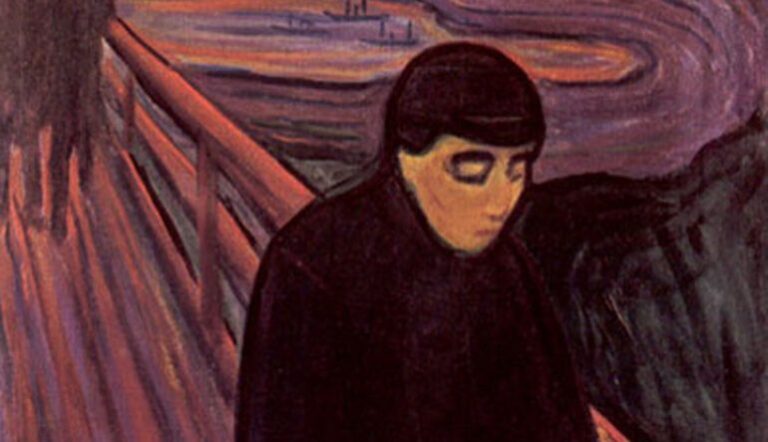Glimpsing Truth in the Impossible with Lynne Sharon Schwartz

There were quite a few eccentrics in my grad school cohort. Some were tangled up in hybrid forms, others fought linear narrative with a feverish intensity, and others still dove head-first into their own form of surrealism and never came back up for air. Eccentrics is the polite term—weirdos might be a better one. Whatever you want to call us, we usually have trouble getting published. I had an advisor who, at the end of our semester together, told me she was worried because I never finished anything. That worried me, too—it still does. But you’re trying things, she said, vaguely but encouragingly. Keep trying things. Most writers are urged, either by their mentors or by the more impersonal voice of the publishing industry, to find their voice and stick with it. If it’s not a voice, it’s a theme. If you want to get vulgar: a brand. The implication is that writers can and should find a lane and stay in it for the duration of their careers. I always knew this felt wrong, but Lynne Sharon Schwartz’s new collection, Truthtelling: Stories, Fables, Glimpses, out tomorrow, makes clear how big a lie it really is.
Truthtelling’s subtitle captures the implication of some narrative rug-pulling Lynne manages within the book, if not its woozy effects. The stories range from Borgesian—”The Tree of Porphyry” namechecks hypertext and explores the branching possibilities for two characters unfolding from a single line of dialogue—to more straight-played fables. “Apples” traces the life of a ballet dancer who eats only a certain kind of the titular fruit. Most of the pieces are very short, and they all deal with coming up against the impossible. They also, notably, are a departure for Schwartz.
Schwartz has never been one to pick a lane. She’s published poetry, stories, novels, memoir, and even translations from Italian. Even so, her typical mode for fiction is the kind of New York realism that I like to read but could never begin to write. I was lucky enough to study with her at Bennington, where I found that she was a stickler for reading lists. Some advisors would look at a student’s work and give reading suggestions, while others would leave those lists completely up to the students. Lynne was neither. Here are your gaps, she told me, after our first meeting. Fill them. I don’t mean to give the impression that she was a rigid teacher—far from it, as it turned out. But my first impression was of someone who respected canons, including her own. Then, during one faculty reading, she took the stage and told us that she had recently heard a strange voice. She told us that she started writing this voice down and it formed the basis of some new things she was working on. What she read us was “I Want My Car,” a hilarious and delightfully odd story about a man trying to get his car back from his soon-to-be-ex-wife. As I listened to Lynne read, I realized I was watching someone who, after decades of deftly capturing the reality of her world, had chosen to turn and examine the unreality of it.
The collection’s title story is its first, and, as all good first stories do, sets out a trail marker for the rest of the book. In “Truthtelling,” a couple has grown old together. They’ve made it through a long marriage without divorce and without losing their love for one another. Friends ask for their secret, and the couple just shrugs. When they were young, they promised to tell each other the truth about everything. Their life from that point onward was comfortable, fulfilling—the kind of life that few in this world can hope for. Now that the couple has grown old together, as they had planned to, they sit on the porch of their weekend home and decide to tell each other the truth. We read that both had lied to each other about plenty over the years: affairs, an abortion, bad habits that stayed on for longer than they’d admitted at the time. There’s surprise at the confessions and hurt, but not too much. In the end, the couple goes off to have sex in the same way they did when they were young. The idyll of their shared life has partially vanished and partially remained. We’re left to wonder: was it better for the couple to have finally told the truth? Were the lies what kept them together? Certainly, we are left with a suspicion that knowledge of reality is not the same as understanding truth.
Not many of the characters that we meet are as lucky as the first couple in Truthtelling. Most find themselves in unthinkable situations, either by chance or through their own inexplicable actions. Some flounder while others come to understanding, and thrive in the face of impossibility. In my favorite of the latter kind, “Pickup,” a woman is in town to tend to her father during his surgery and notices a driver outside her hotel staring at her. She gets in the car, on a whim. She’d meant to indulge “an urge for adventure, for the unforeseen” but finds that the driver is convinced that she is actually the person he is supposed to be picking up. Specifically, he thinks that she is a concert pianist, late for a big show. The driver shows her the program, which lists her name and has a photo of a woman who looks very much like her. At first, the woman plays along but when she learns what is expected of her, she balks. She can’t seem to alter the driver’s plans and so she’s taken to the concert hall. But once there, she doesn’t run. Instead, she forces herself to sit and play. In a beautifully bold narrative turn, the woman finds that she can, in fact, play the piece that is expected of her. The woman manages to finish the concert and the audience is none the wiser. What began as a story of mistaken identity becomes a parable encouraging continual flexibility and a devotion to artistry, even when one feels out of one’s depths.
I began my program wanting to write literary fiction that borrowed the thematic and narrative freedom of genre writing. My critical work focused on haunted houses and the formal structure of fairy tales, and my short stories had fairy tale origins, as well. Halfway through my program, I started working on a novel that was similar—it combined a fairy tale trope with what I hoped would be a kind of Lynchian haunted house story. The more I worked with my advisors, though, the more the traditional MFA themes and styles began to drift into my novel pages. Nobody sat me down in a packed concert hall and told me to write about New Yorkers getting a messy divorce, but suddenly my narrator’s relationships with her mother and sister were essential. Out of nowhere, she developed an unresolved childhood trauma. My novel had become a shape-shifter, and an ugly one. It was difficult to square what I wanted to do with how I was starting to think.
Many of Truthtelling’s stories play with shifting identity—the ways we grapple with what it means to stay the same person through one long life, and the slow realization that we really don’t. “Am I a Thief,” which was first published in Ploughshares’ Summer 2019 issue, “An Impromptu Visit,” and “The Middle Child” are especially focused on this theme, for instance. But the story that laid Schwartz’s thesis out most clearly for me was “Return of the Frenchman.” The story begins strangely enough. A man invites a woman to come away with him, out of the blue, at a supermarket. The woman is confused and, predictably, turns him down. After he walks away, the woman realizes the situation was not as unexplained as she’d thought. In fact, she’d met the man at a dinner party years ago. They’d both been married at the time, and the woman had felt a strong attraction to the man, though she’d dismissed the possibility of an affair immediately as logistically impossible. Personally, this is a favorite theme of mine: a beautiful, almost unbelievable possibility abandoned for mundane concerns. Or, as Schwartz puts it, abandoned for a sheer inability to “manage” the situation. “Return of the Frenchman” concerns itself with the way that things that once seemed impossible are sometimes suddenly, inexplicably, right there on the table.
I worked with Lynne in the term before my final one. We worked together for six months, and she guided me through my unending struggles with voice and structure. That term ended in my frustration, not with our time together, but with myself and my novel. Lynne told me, gently, what I was still trying to deny to myself: the novel wasn’t working. I still didn’t know what it wanted to be. She recommended that I work on something new for my final thesis term.
I followed her advice, partly, and partly ignored it. In my final term, I started the novel over completely: I gave it a new setting; I tortured the characters with different histories. I finished that draft a full year after the term I spent with Lynne. I revised it, twice. And somewhere along the line, it’s difficult to say when or where, the impossible was right there on the table. An invisible switch had been flipped and the novel really was working as both a family drama and a strange haunted house story.
Lynne doesn’t pick a lane with her writing, and I’ve decided not to, either. The Lynne who was my teacher might have been a little surprised that I started over, but the Lynne who wrote Truthtelling isn’t. Above all, the stories in Truthtelling offer us an invitation to the unknown in ourselves and in the world. Turn to the impossible, they tell us, and explore it. As artists, as writers, as people living our lives. We cannot help but do so, after all, since the impossible is going to show up if we’re ready or not.


